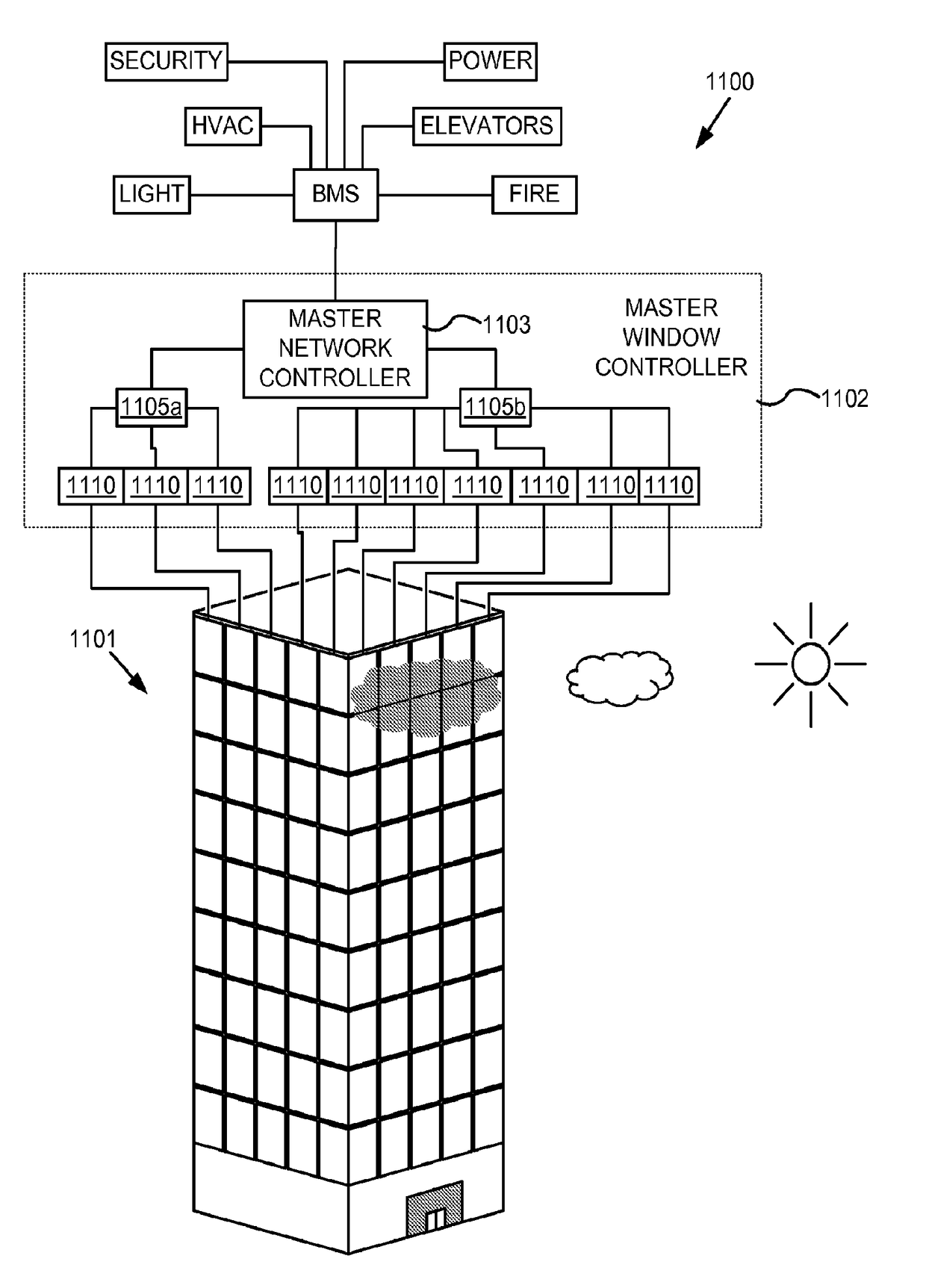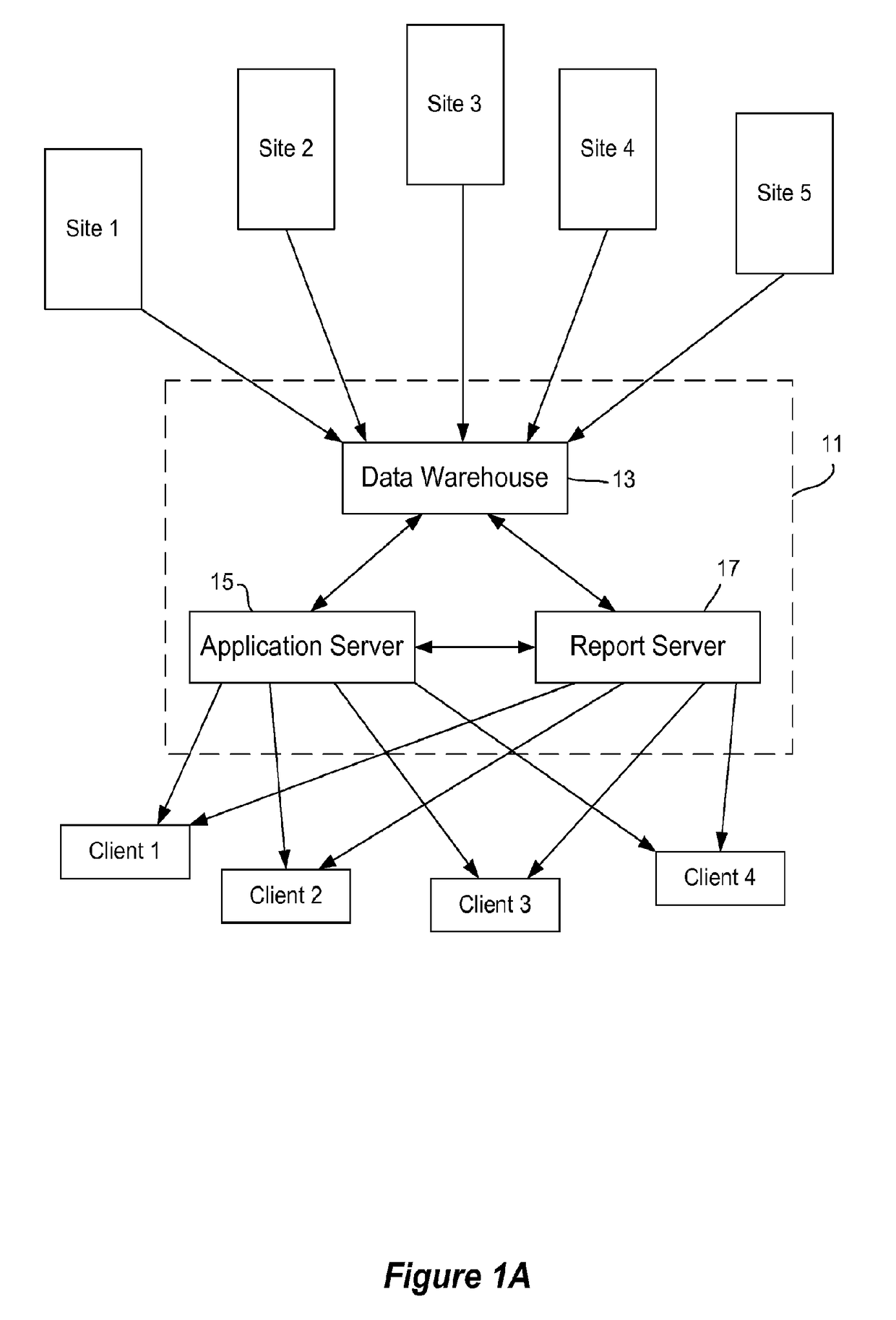Monitoring sites containing switchable optical devices and controllers
a technology of optical devices and controllers, applied in the field of monitoring sites, can solve the problems of increasing the sophistication of control and monitoring systems, and achieve the effects of increasing the switching voltage, enhancing the comfort of the occupant, and auto-correcting the degradation
- Summary
- Abstract
- Description
- Claims
- Application Information
AI Technical Summary
Benefits of technology
Problems solved by technology
Method used
Image
Examples
example switching
[0149]To speed along optical transitions, the applied voltage is initially provided at a magnitude greater than that required to hold the device at a particular optical state in equilibrium. This approach is illustrated in FIGS. 2 and 3. FIG. 2 is a graph depicting voltage and current profiles associated with driving an electrochromic device from bleached to colored and from colored to bleached. FIG. 3 is a graph depicting certain voltage and current profiles associated with driving an electrochromic device from bleached to colored.
[0150]FIG. 2 shows a complete current profile and voltage profile for an electrochromic device employing a simple voltage control algorithm to cause an optical state transition cycle (coloration followed by bleaching) of an electrochromic device. In the graph, total current density (I) is represented as a function of time. As mentioned, the total current density is a combination of the ionic current density associated with an electrochromic trans...
examples
[0187]FIG. 8 shows an example of a dashboard for site monitoring system. The depicted view includes a row for each of multiple sites monitored by the system, with each row including a site name, its current status, and a most recent update time. The status row indicates whether or not all monitored devices and controllers in the site appear to be functioning properly. A green light may be used to indicate no problems, a red light may be used to indicate that a problem exists, and a yellow light may be used to indicate that a device or controller is trending toward a problem. One field of the view provides a link to details about the site. Thus, if the dashboard shows that there may be a problem at the site, the user can obtain pull up event logs, sensor output, window electrical responses, etc. for the site. This allows the user to drill down quickly to the precise issue while still having a high-level picture of any sites that have issues.
[0188]FIG. 9 presen...
PUM
| Property | Measurement | Unit |
|---|---|---|
| hold voltage | aaaaa | aaaaa |
| energy | aaaaa | aaaaa |
| temperature | aaaaa | aaaaa |
Abstract
Description
Claims
Application Information
 Login to View More
Login to View More - R&D
- Intellectual Property
- Life Sciences
- Materials
- Tech Scout
- Unparalleled Data Quality
- Higher Quality Content
- 60% Fewer Hallucinations
Browse by: Latest US Patents, China's latest patents, Technical Efficacy Thesaurus, Application Domain, Technology Topic, Popular Technical Reports.
© 2025 PatSnap. All rights reserved.Legal|Privacy policy|Modern Slavery Act Transparency Statement|Sitemap|About US| Contact US: help@patsnap.com



